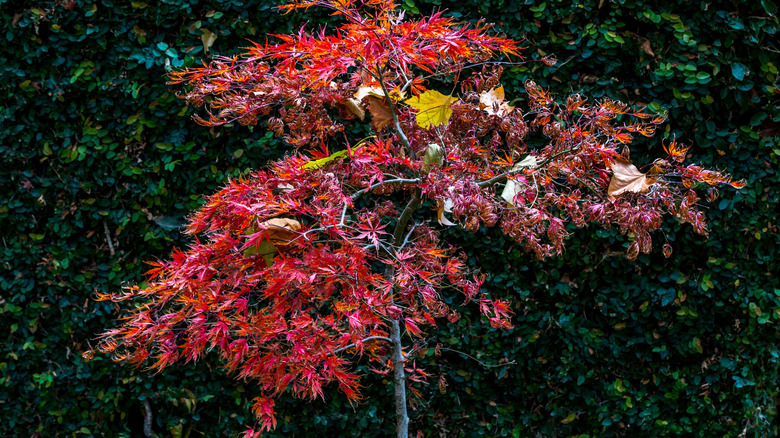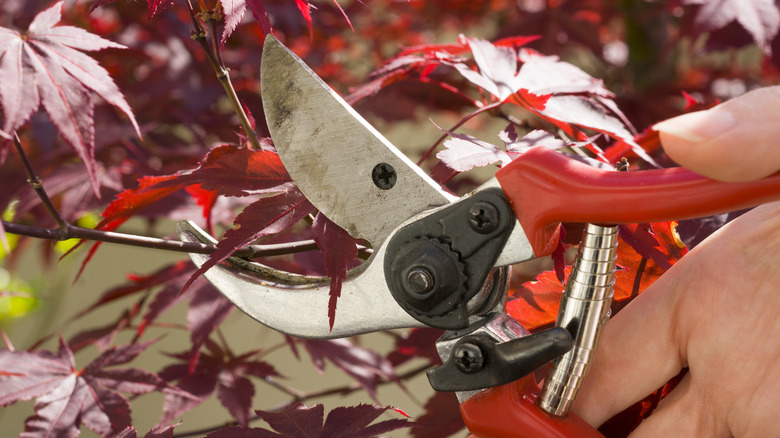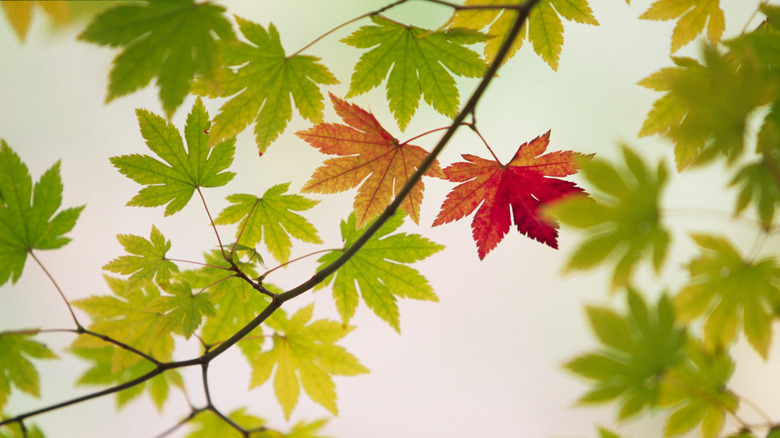The Best Time Of Year To Prune Your Japanese Maple, And How To Do It
Pruning your Japanese maple tree demands careful consideration of the seasons. The late winter to early spring window offers a unique opportunity. During this dormant phase, the tree focuses on essential processes like root development and winter survival. Pruning at this time harnesses the tree's natural dormancy, minimizing the impact on its energy reserves and reducing the stress associated with cutting.
Winter pruning is particularly advantageous as it coincides with the tree's lowest sap production. This means less sap loss and a more efficient healing process for the Japanese maple. Additionally, the absence of leaves during this period provides a clearer view of the tree's structure, enabling you to make well-informed decisions about which branches to trim.
Avoid over or heavy pruning during active growing times or when the tree has plenty of leaves. This is when the Japanese maple is focused on growth, and it could cause undue stress to the tree. Disturbing the tree during this phase could disrupt the nutrient flow, hampering its ability to recover. It may also not have enough time to harden the new growth before winter sets in. By aligning your pruning schedule with the natural rhythms of the Japanese maple, you not only enhance its resilience but also ensure a flourishing and visually stunning addition to your garden landscape.
How to prune for best results
Embarking on the journey of pruning your Japanese maple requires a systematic approach to achieve the desired results. Begin by inspecting the tree and identifying dead, damaged, or crossing branches. Armed with clean and sharp pruning shears, make deliberate and precise cuts to remove the identified branches.
As you proceed, prioritize the removal of branches that disrupt the tree's natural form or hinder air circulation within its canopy. This approach enhances the tree's aesthetics and promotes its overall health. When making cuts, position the shears just above a bud, and when cutting close to a stem, be sure to leave half a centimeter to facilitate proper healing and encourage the emergence of new growth.
Throughout the pruning process, periodically step back and assess the evolving shape of the Japanese maple. This step ensures that the tree's silhouette aligns with your preferences. Pruning any tree can be a challenge; you need to enhance the structure of the tree while being sure not to lose its beauty.
Additional tips
Add to your Japanese maple pruning experience with these invaluable tips to ensure long-term success and the well-being of your tree. Begin by prioritizing tool hygiene – sterilize your pruning equipment before use. This prevents the potential transmission of diseases between cuts, safeguarding the overall health of your Japanese maple.
Avoid the common pitfall of over-pruning by removing no more than one-third of the tree's total foliage during a single pruning session. This minimizes stress on the tree and allows it to recover more efficiently. Striking this balance is essential for sustaining the Japanese maple's vitality and beauty.
Lastly, exercise patience as you witness the aftermath of your pruning efforts. The Japanese maple's response to pruning is gradual and may take some time to manifest. Regularly monitor the tree's progress, and you'll witness the emergence of new growth, a testament to the success of your pruning endeavors. By integrating these tips into your pruning routine, you contribute to the long-term health and resilience of your Japanese maple, ensuring it remains a stunning focal point in your landscape.


